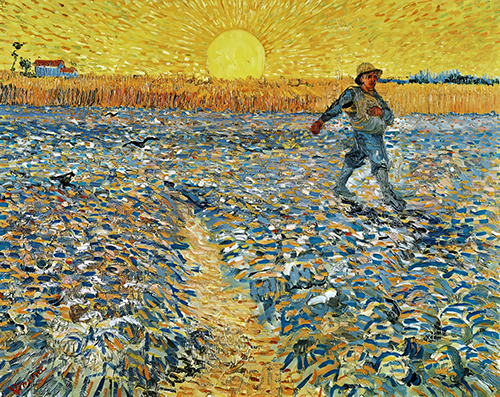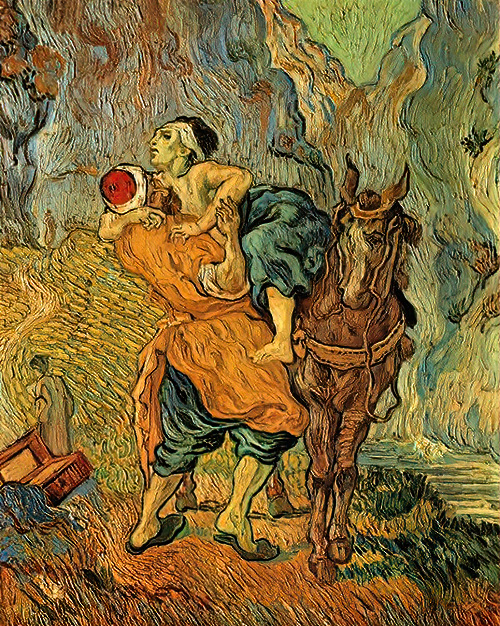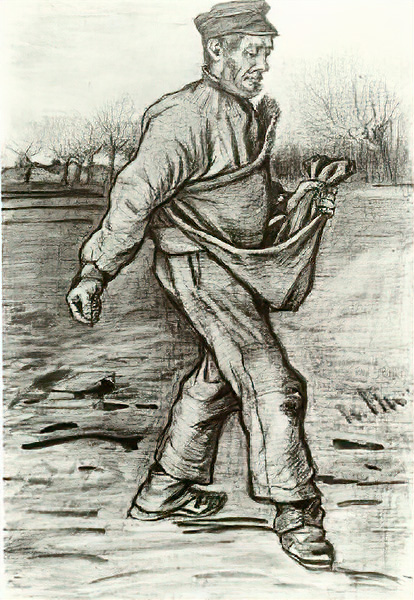“The Parable of the Sower” is the title given in the Bible I use (The New Revised Standard Version – Catholic Edition, NRSV).
The Gospel ( Matt 13: 1 – 23) also includes the purpose of parables, and the parable of the Sower explained.
Consequently, our attention is captured by the diversity of ground the seed falls on, and as a result which part of me is rocky, shallow, full of thorns and the like. What has happened is that I have become the focus of attention!
I suggest reading verses 1 – 9 because the story’s focus is now on the Sower.

The Dutch Post-Impressionist painter, Vincent Van Gogh (1853 – 1890), was particularly interested in Sowers throughout his artistic career.
He made more than 30 drawings and paintings on this theme, and my focus is the painting “The Sower at Sunset”.
This painting was completed by Van Gogh in 1888 in Arles, Provence, during his somewhat intense and turbulent friendship with the French artist Paul Gauguin in the Yellow House.
The Yellow House also features in Van Gogh’s paintings.
The picture shows, somewhat obviously, a person out in a field scattering seeds.
When I look at the action of the person sowing, the word “indiscriminate” comes to mind.
I picture the flow of the hand and arm from the seed bag to the ground – backwards and forwards, the seed is flung, which is the intention of the one sowing.
Freely and with gay abandon, the seed is spread.
The striking aspect of this painting is that the ripe corn can still be seen behind the Sower, who sows the cultivated land with a broad arm gesture.
However, the Sower is not walking among the fertility of what has been sown ( and grown); instead, the Sower is walking on the cultivated soil – the what might be – and indeed, the Sower and the ploughed land share the same colour.
Principally, the question I am left with for reflecting is might I find my God more in what is to come; the ploughed field, rather than in what has been; the fertile field of corn?


